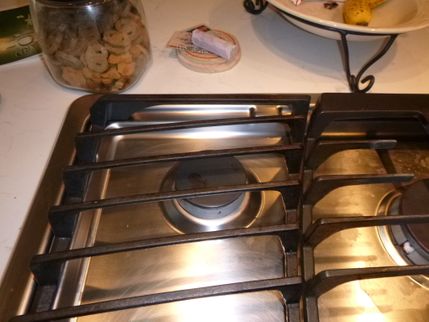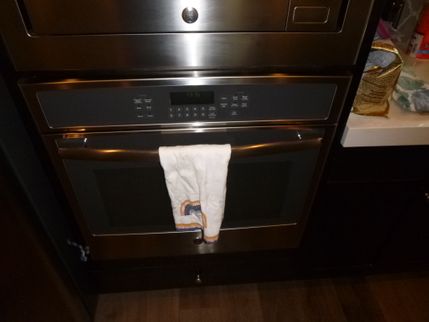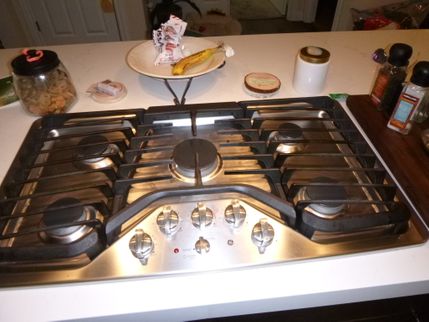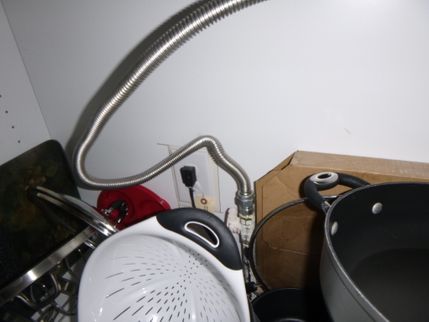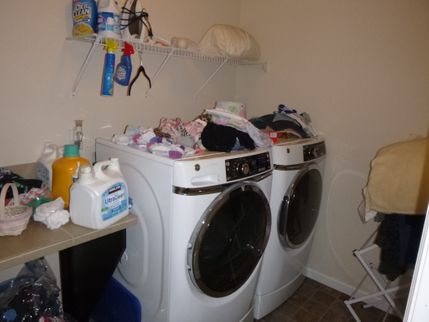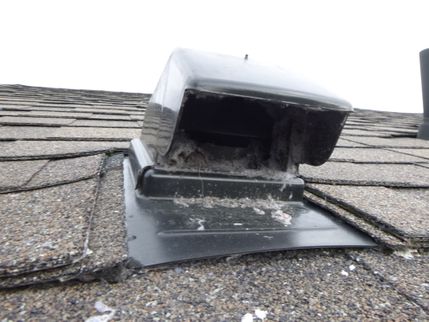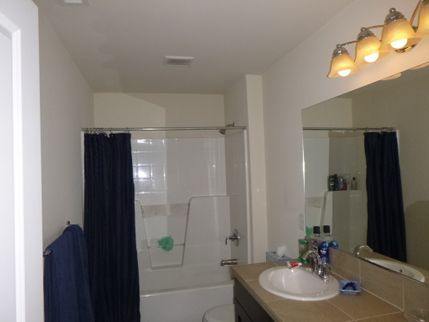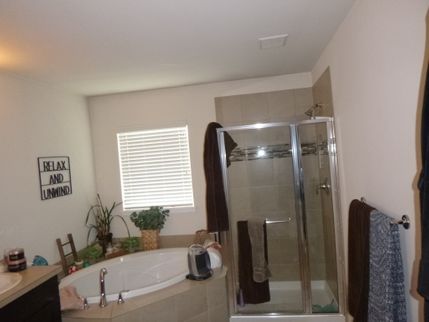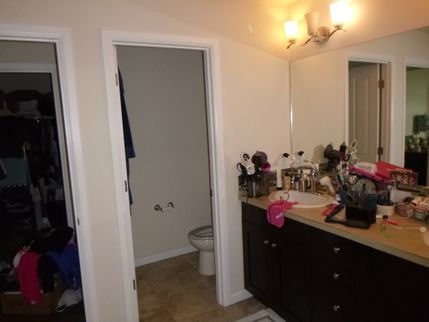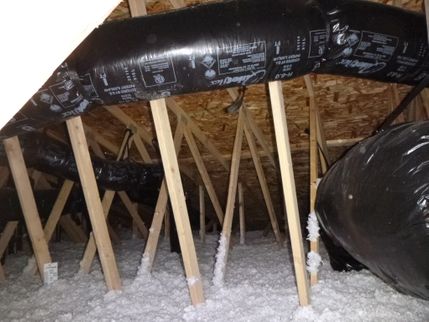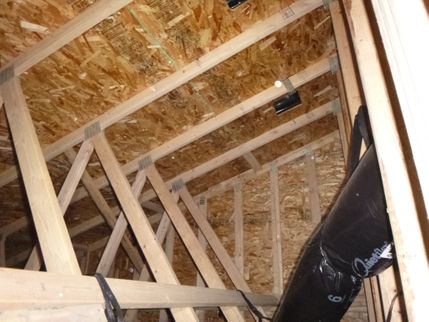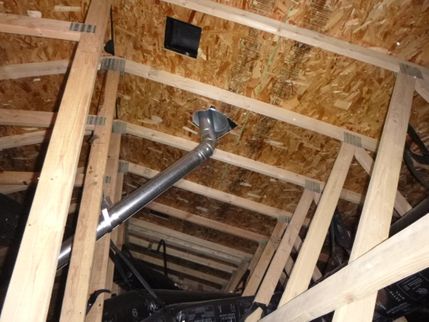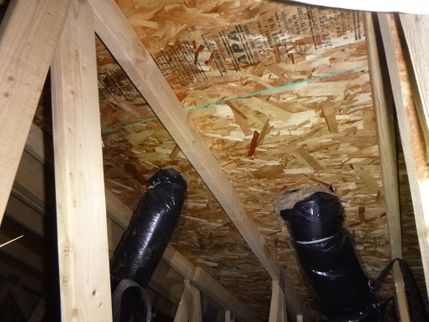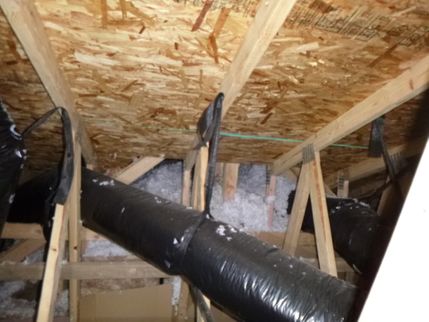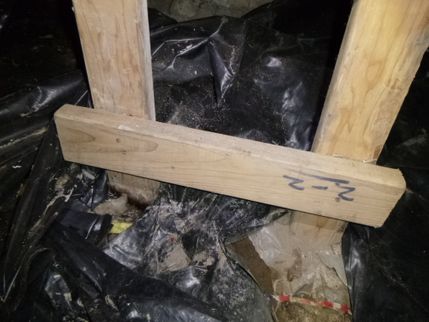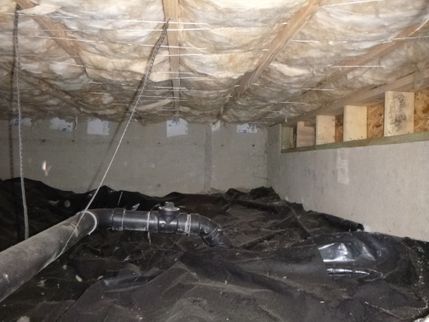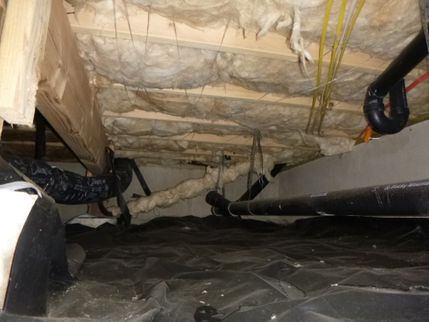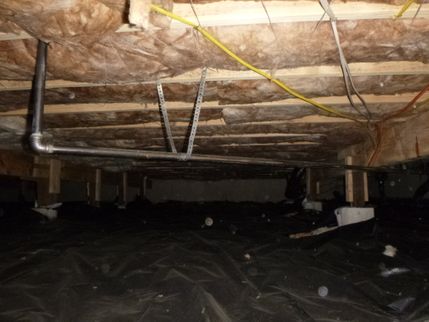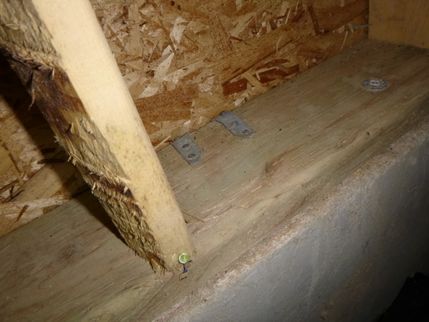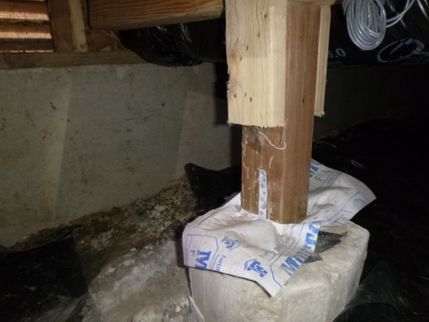The Scope and Purpose of a Home Inspection
Purchasing property involves risk
The purpose of a home inspection is to help reduce the risk associated with the purchase of a structure by providing a professional opinion about the overall condition of the structure. A home inspection is a limited visual inspection and it cannot eliminate this risk. Some homes present more risks than others. We cannot control this, but we try to help educate you about what we don’t know during the inspection process. This is more difficult to convey in a report and one of many reasons why we recommend that you attend the inspection.
A home inspection is not an insurance policy
This report does not substitute for or serve as a warranty or guarantee of any kind. Home warranties can be purchased separately from insuring firms that provide this service.
A home inspection is visual and not destructive
The descriptions and observations in this report are based on a visual inspection of the structure. We inspect the aspects of the structure that can be viewed without dismantling, damaging or disfiguring the structure and without moving furniture and interior furnishings. Areas that are concealed, hidden or inaccessible to view are not covered by this inspection. Some systems cannot be tested during this inspection as testing risks damaging the building. For example, overflow drains on bathtubs are generally not tested because if they were found to be leaking they could damage the finishes below. Our procedures involve non-invasive investigation and non-destructive testing which will limit the scope of the inspection.
This is not an inspection for code compliance
This inspection and report are not intended for city / local code compliance. During the construction process structures are inspected for code compliance by municipal inspectors. Framing is open at this time and conditions can be fully viewed. Framing is not open during inspections of finished homes, and this limits the inspection. All houses fall out of code compliance shortly after they are built, as the codes continually change. National codes are augmented at least every three years for all of the varying disciplines. Municipalities can choose to adopt and phase in sections of the codes on their own timetables. There are generally no requirements to bring older homes into compliance unless substantial renovation is being done.
This is just our opinion
Construction techniques and standards vary. There is no one way to build a house or install a system in a house. The observations in this report are the opinions of the home inspector. Other inspectors and contractors are likely to have some differing opinions. You are welcome to seek opinions from other professionals.
The scope of this inspection
This inspection will include the following systems: exterior, roof, structure, drainage, foundation, attic, interior, plumbing, electrical and heating. The evaluation will be based on limited observations that are primarily visual and non-invasive. This inspection and report are not intended to be technically exhaustive.
Your expectations
The overall goal of a home inspection is to help ensure that your expectations are appropriate with the house you are proposing to buy. To this end we assist with discovery by showing and documenting observations during the home inspection. This should not be mistaken for a technically exhaustive inspection designed to uncover every defect with a building. Such inspections are available but they are generally cost-prohibitive to most homebuyers.
Your participation is requested
Your presence is requested during this inspection. A written report will not substitute for all the possible information that can be conveyed verbally by a shared visual observation of the conditions of the property.
How to Read This Report
Getting the Information to You
This report is designed to deliver important and technical information in a way that is easy for anyone to access and understand. If you are in a hurry, you can take a quick look at our "Summary Page” and quickly get critical information for important decision making. However, we strongly recommend that you take the time to read the full Report, which includes digital photographs, captions, diagrams, descriptions, videos and hot links to additional information.
The best way to get the layers of information that are presented in this report is to read your report online, which will allow you to expand your learning about your house. You will notice some words or series of words highlighted in blue and underlined – clicking on these will provide you with a link to additional information.
This report can also be printed on paper or to a PDF document.
Chapters and Sections
This report is divided into chapters that parcel the home into logical inspection components. Each chapter is broken into sections that relate to a specific system or component of the home. You can navigate between chapters with the click of a button on the left side margin.
Most sections will contain some descriptive information done in black font. Observation narrative, done in colored boxes, will be included if a system or component is found to be significantly deficient in some way or if we wish to provide helpful additional information about the system or the scope of our inspection. If a system or component of the home was deemed to be in satisfactory or serviceable condition, there may be no narrative observation comments in that section and it may simply say “tested,” or “inspected.”
Observation Labels
All narrative observations are colored, numbered and labeled to help you find, refer to, and understand the severity of the observation. Observation colors and labels used in this report are:
- Recommended Repair:Repair and maintenance items noted during inspection. Please note that some repair items can be expensive to correct such as re-finishing hardwood floors, but are considered simply repair items due to their cosmetic nature.
- Recommended Maintenance:These are repair items that should be considered "routine home ownership items," such as servicing the furnace, cleaning the gutters or changing the air filters in the furnace.
- Note:Refers to aside information and /or any comments elaborating on descriptions of systems in the home or limitations to the home inspection.
- Description:Detailed description of various aspects of the property noted during the inspection.
Summary Page
The Summary Page is designed as a bulleted overview of all the observations noted during inspection. This helpful overview is not a substitution for reading the entire inspection report. The entire report must be read to get a complete understanding of this inspection report as the Summary Page does not include photographs or photo captions.
Summary
Recommended Repairs
- K-4 Kitchen:
Repair the left rear burner on the cooktop that was inoperative and did not respond to testing. This can be the result of a bad or dirty ignitor.
- CS-2 Crawl Space:
The crawl space access ladder has direct contact with the ground, complete any and all repairs found to be required to properly support the ladder and prevent earth to wood contact.
- CS-3 Crawl Space:
The sub-floor and plumbing pipe insulation in the crawl space area below the kitchen is missing. Ensure the entire sub-floor is insulated. When making repairs it is best to seal any noticeable air leaks between the crawl space and the living space. Check all penetrations through the floor.
Recommended Maintenance Items
- RCG-1 Roof, Chimney and Gutters:
Remove all organic debris from the roof surfaces, any damaged roofing material that is located during the cleaning must be replaced as found to be required. The gutters and downspouts and tight lines must also be cleaned, ensure all gutters are properly sloped towards the downspouts and complete any other repairs found to be required to ensure the system is properly directing all roof run off away from the structure.
- ESDW-2 Exterior Siding, Doors and Windows:
Localized minor caulking and painting repairs are needed to the exterior of the house.
- HCFV-1 Heating, Cooling, Fireplaces and Ventilation:
Annual servicing of gas forced air furnaces is recommended for safe and reliable heat. I could not find recent service records on the furnace. A servicing is recommended if one has not been done in the last year. The furnace was tested during inspection and was operational.
- HCFV-2 Heating, Cooling, Fireplaces and Ventilation:
The batteries that act as back-up power for the gas log unit should be removed from the cradle to prevent them from corroding - for some reason these always seem to corrode when left installed. I recommend storing them below the fireplace so they can be used in the event of a power outage.
- LF-2 Laundry Facilities:
The dryer exhaust hood/ductwork is dirty and needs to be cleaned for improved safety. This is important regular maintenance to eliminate a potential fire hazard.
Notes
- GC-2 General Comments:
The report has been procured by the seller and is provided for informational and disclosure purposes only. It is not intended to constituent a warranty, either expressed or implied about the condition of the property.
- G4-1 Garage:
Extensive storage in the garage inhibited the view of most of the garage and limited visual inspection of this space.
- EDFW-1 Electric Distribution and Finish Wiring:
Carbon monoxide alarms were found and noted during inspection. Be sure to check these regularly. The standard is 1/ floor and 1 outside all sleeping areas.
- K-2 Kitchen:
No air gap noted for the dishwasher waste line but they did run a high loop. This is not done to WA state standards, but is generally satisfactory and many jurisdictions in the state allow for simply a "high loop" installation.
- A-1 Attic:
I did not crawl the crawl space for the attic where there was no ramp or safe way to access the space. Crawling in the V of trusses or on top of framing risks damaging thermal barriers and ceiling finishes and is not a safe way to access an attic. This limited inspection of this space.
- CS-1 Crawl Space:
The photos provided here show representative images of this crawl space at the time of inspection.
📃 The Complete Inspection Report
General Comments
Building Characteristics, Conditions and Limitations
Style of Home: Traditional
Type of Building : Single Family (2-story)
Approximate Square Footage: 3120
Approximate Year of Original Construction: 2015
Attending the Inspection: Seller
Occupancy: Occupied
Animals Present: Yes
Weather during the inspection: Cloudy
Approximate temperature during the inspection: Below 50[F]
Ground/Soil surface conditions: Wet
For the Purposes of This Report, the Front Door Faces: South
The report has been procured by the seller and is provided for informational and disclosure purposes only. It is not intended to constituent a warranty, either expressed or implied about the condition of the property.
This home was occupied at the time of the inspection. Inspection of occupied homes presents some challenges as occupant belongings can obstruct visual inspection of and access to parts of the building. We do our best during inspection to work around belongings to discover as much as possible about the house without moving or damaging personal property, however, the presence of personal items does limit the inspection.
Grounds
Drainage and Site
Clearance to Grade: Standard
Downspout Discharge: Below grade
Site Description: Flat, Small Slope
Grounds, Trees and Vegetation
Trees/Vegetation too near building: No
Fences
Exterior Fencing: Present
The property has a fencing system in place. Inspection and evaluation of fencing is beyond the scope of a home inspection. If the fencing system is important for your use of this property, I recommended a self-examination to see how it will meet your needs. I may make cursory comments about fencing as a courtesy.
Roof, Chimney and Gutters
Roof Materials
Method of Roof Inspection: Walked on roof
Roof Style: Gable
Flashings: Present and Visually Standard
Roof flashings are used to keep a roofing system waterproof where the roofing material starts, stops, changes direction or is penetrated. During inspection, we look for standard flashing techniques that could be considered normal or standard in our region. Damaged, incomplete or non-standard flashings can be a sign of an older or less reliable roofing system and may require repair. Any non-standard flashings noted during inspection will be reported on below if found.
Roof Covering Materials: Architectural grade composition shingle
Approximate Age of Roof Covering: 6-8 Years
Overlay Roof: No
Remove all organic debris from the roof surfaces, any damaged roofing material that is located during the cleaning must be replaced as found to be required. The gutters and downspouts and tight lines must also be cleaned, ensure all gutters are properly sloped towards the downspouts and complete any other repairs found to be required to ensure the system is properly directing all roof run off away from the structure.
Gutters and Downspouts
Gutter and Downspout Materials: Metal
Exterior Siding, Doors and Windows
Siding and Trim
Trim Material: Wood
Siding Material: Fiber-cement, Manufactured Stone Veneer, Board and batten
Manufacturers of fiber cement siding have made it difficult to distinguish their products after installation;. This report will site James Hardie manufacturers installation requirements for reference because they are the most common manufacturer of fiber cement siding and the various manufactures seem to share similar installation guidelines. Here is a link to the HZ-10 Best Practices Guide. However, reference of these guidelines in this report does not ensure that the fiber cement siding here is a James Hardie product.
Parts of the exterior siding system here are done using manufactured stone veneer. This is a cement-based product that is manufactured to look like natural stone. It is often used as a decorative detail on the exterior of residential construction and it is occasionally used as an extensive part of the exterior siding system. As a general guide to understanding this product, it should be installed in a fashion similar to hard-coat stucco. One critical aspect of the installation that is concealed once the installation is complete is that two layers of underlayment should be used beneath this product.
Exterior Vent and Exhaust Terminations
Present
Eaves
Open rafters
Exterior Doors
Solid core, Sliding glass
Exterior Window Frames
Vinyl
Decks, Porches and Balconies
Concrete Decks, Stoops, Landings and Porches
Concrete Structure: Present, Noted at the entry, Covered Patio
Fuel Storage and Distribution
Garage
Garage General
Garage Type: Attached
Garage Doors and Automatic Openers
Overhead Garage Door Type: Metal
Automatic Garage Opener: Present
Garage Occupant Door: Solid Wood
Garage Floor
Garage Slab: Concrete
Garage Stairs
Garage Stairs: Standard
Electric Service
Electric Service Voltage
Service Voltage: 120/240
Electric Service Equipment
Service Entrance (SE) conductor Size: Aluminum, 4/0, 200 amps
Main Panel Amperage: 200 amps
Electric Service Amperage: 200 amps
Main Electric Panel Location: Garage
Panel Manufacturer: Square D
Electrical Grounding System
UFER Ground Not Visible
Electrical Bonding System
Present - Could Not Confirm
During the inspection, I attempt to visually document electrical system bonding. There is no way in the context of a home inspection to verify the "effectiveness" of system bonding. All metallic systems in the building are required to be "bonded" (connected) to the the building's electrical grounding system. Bonding creates a pathway to shunt static charges (that would otherwise build up on the system) to earth, and to provide a pathway to trip a breaker in the event that these bonded metallic components became energized. There are many things that can lead me to recommend further evaluation of this system by a licensed electrical contractor and they will be documented as repair items in the observations below if discovered.
Electric Distribution and Finish Wiring
Branch Wiring
Wire Material: Copper, Multi-strand Aluminum
Wiring Method: Non-metallic sheathed cable
Receptacles and Fixtures
Inspection Method: Representative Testing
A representative number of receptacles and switches were tested during inspection. Any defects found during inspection are noted in this report. Only visible and accessible receptacles and switches were tested during inspection and personal items and furnishings are not moved to access any receptacles or fixtures.
Electric Receptacles: Three wire receptacles
Smoke and Carbon Monoxide Alarm Systems
CO Alarms Noted: Outside all Sleeping Areas
Outside all Sleeping Areas On Main Floor
On Main Floor On 2nd Floor
On 2nd Floor
CO Alarms: Present
The installation of carbon monoxide alarms is recommended for all homes that have fuel burning appliances such as gas or oil furnaces, gas water heaters, gas ovens and cook-tops, gas fireplaces and wood stoves. In addition, Washington State law (WAC 51-51-0315) now requires UL 2034 approved carbon monoxide alarms in ALL homes and condominiums being sold in Washington State. The location should be: at least one alarm outside of all sleeping areas and one on each floor of the house. Best practices are to have these alarms hardwired with a battery back-up - though requirements are for the installation to meet manufacturer's specifications. Carbon monoxide is a colorless, odorless gas that can cause sickness, nausea and even death. Alarms have a useful service life of roughly 6 years, so changing them more frequently than smoke alarms is recommended.
Smoke Alarms Noted: On Main Floor
On Main Floor On 2nd Floor
On 2nd Floor In All Bedrooms
In All Bedrooms
Smoke Alarms: Present
During the home inspection, I try and test a representative sample of the smoke alarms by using the test button on the alarms. This is NOT an accurate test of the sensor just a test to see if the unit is powered. For reliability, fire marshals recommended updating smoke alarms every 10 years and changing batteries bi-annually. The latest data indicate that we should be using photoelectric technology in our smoke alarms for improved fire detection and to reduce problems with false alarms which can lead to disabling of this important safety system. Unfortunately, the alarms have to be removed to determine if they are photo-electric or ionization types. It is surprisingly complex to accurately test a smoke alarm system and determine the reliability, age, and type of sensor technology used, especially as many homes can have half a dozen or more alarms throughout the house. A complete evaluation of smoke alarms is beyond the scope of this inspection. For optimal fire safety, I recommend taking control of these important safety devices and learning about how to service and maintain your smoke alarm system to keep the building occupants safe. For more information, please read this link. For more information, please read this link.
Heating, Cooling, Fireplaces and Ventilation
Heating System
Energy Source: Natural gas
Heating Method: Gas forced air furnace
This house has a gas forced air furnace. A critical component to all combustion heating equipment is the heat exchanger. This is the welded metal assembly inside the furnace that contains the products of combustion so that moisture, carbon monoxide and other products of combustion do not mix with interior air and get safely vented to the exterior. Heat exchangers on modern furnaces have an average life expectancy of 15-20 years. Unfortunately, heat exchangers are concealed inside the heating equipment; they are not visible and specifically excluded from a home inspection. Cracks in heat exchangers may be concealed and can pose a potential safety hazard.
Manufacturer: Bryant
Capacity: 66,000 btu's
Age: 2015
Last Service Record: No Recent Service Records Noted
Annual servicing of gas forced air furnaces is recommended for safe and reliable heat. I could not find recent service records on the furnace. A servicing is recommended if one has not been done in the last year. The furnace was tested during inspection and was operational.
Air Filters
Filtration Systems: Disposable
The heating and cooling system has disposable air filters installed. These should be changed quarterly or more to ensure proper air flow at the furnace. Be sure to install the filters with the arrows pointing in the same direction as the air flow in the furnace.
Heating and Cooling Distribution Systems
Heat Source in Each Room: Present
Distribution Method: Forced Air / Ducts
Mechanical Ventilation Systems
Bath Fan Ducting: Ducted to exterior
Kitchen Fan Ducting: Ducted to exterior
Whole House Fans, Ventilation and HRVs: Landry / House Fan
Gas Fireplaces
Fireplace Types: Direct vent gas log fireplace
Fan Present: No
Battery Cradle: No Corrosion But Remove Batteries
The batteries that act as back-up power for the gas log unit should be removed from the cradle to prevent them from corroding - for some reason these always seem to corrode when left installed. I recommend storing them below the fireplace so they can be used in the event of a power outage.
Plumbing
Water Service Supply
Pipe Material: Plastic
Water Supply: Public water
Water Pressure: 65 PSI
Pressure Reducing Valve: None noted
Main Water Shut-off Location: Garage
Distribution Pipe
Pipe Insulation: Present
The visible portions of the supply piping appear to be insulated. However, prior to freezing weather it is always a good idea to check pipes and hose bibs for adequate insulation and freeze protection to protect pipes from cold weather and freezing conditions. Hose bibs can often be winterized prior to cold weather.
Supply Pipe Materials: Copper, PEX
Functional Flow: Average
Circulation Pump: None Noted
Waste Pipe and Discharge
Water Heater
System Type: Tank-less
Manufacturer: Rinnai
Size: N/A
Age: 2015
Energy Source: Gas
Straps : None needed - tankless
Pad: None Needed
Drain Pan: Not Needed
Expansion Tank: Present
Temperature Pressure Relief Value: Present - Not Tested
A temperature and pressure relief valve (TPRV) is required on all water heaters to discharge any excessive pressure within the tank. A discharge pipe should be attached to the valve and directed to a safe location away from body contact. Newer installations must be directed to the building exterior or to an approved indoor drain receptor. Most manufacturers suggest that homeowners test these valves at least once a year by lifting the lever to ensure the valve discharges properly and also recommend inspection of these safety devices every three years. The picture here shows a typical TPRV. They may also be found on the side of the heater on some models. I do not test these valves due to the possibility that they may leak after testing. A leaking or inoperative TPRV should be replaced immediately by a licensed plumber.
Water Temperature
Water Temperature Measured During Inspection: 120 Degrees F
Exterior Hose Bibs
Operating
Interior
Floors and Floor Materials
Floor Materials: Carpet, Engineered Wood
Floor Settlement: None noted
Walls, Ceilings, Trim, Hallways and Closets
Wall and Ceiling Materials: Drywall
Wall Insulation and Air Bypass
Wall Insulation: Not Visible
Stairs and Railings
Standard
Interior Doors
Interior Doors: Solid and Hollow Core
Windows
Window Glazing: Double pane
Interior Window Frame: Vinyl
Window Styles: Sliding
Kitchen
Sinks and Faucets
Tested
Cabinets and Countertops
Countertop Material: Stone
Cabinet Material: Wood
Disposers
Disposer: Operated
Dishwasher
Dishwasher: Not Operated
Dishwasher Air Gap: Just a high loop
No air gap noted for the dishwasher waste line but they did run a high loop. This is not done to WA state standards, but is generally satisfactory and many jurisdictions in the state allow for simply a "high loop" installation.
Ventilation Method
Fan Ducted to Exterior
Ranges, Ovens and Cooktops
Range/ Oven /Cook-tops: Electric
Repair the left rear burner on the cooktop that was inoperative and did not respond to testing. This can be the result of a bad or dirty ignitor.
Refrigerators
Refrigerator: Operating
General Kitchen Condition
Standard
Laundry Facilities
Dryer
Not tested
Laundry Ventilation
Type: Laundry fan
Bathrooms
Sinks and Cabinets
Tested
Toilet
Tested
Bathtub / Shower
Tested
Bathroom Ventilation
Type: Bath fan
General Bath Condition
Standard
Attic
Attic Access
Crawled partial
Roof Framing and Sheathing
Rafters: Truss
Sheathing: OSB
Attic Insulation
Insulation Type: Fiberglass
Approximate Insulation R-Value on Attic Floor: 49
Approximate Insulation R-Value on Attic Ceiling: Not needed
Approximate Insulation R-Value on Attic Walls: Not applicable
Attic and Roof Cavity Ventilation
Attic Ventilation Method: Soffit vents, Roof jack vents
Attic and roof cavity ventilation is a frequently misunderstood element of residential construction. All roof cavities are required to have ventilation. The general default standard is 1 to 150 of the attic area and ideally, this comes from at least 60% lower roof cavity ventilation and 40% upper, but this is a wild over-simplifications of the subject. As a good guiding principle the most important elements for healthy attic spaces, which are traditionally insulated and ventilated are:
- Make sure the ceiling between the living space and the attic is airtight
- Ventilate consistently across the whole lower part of the roof cavity with low, intake soffit venting
- Upper roof cavity venting is less important and if over-installed can exacerbate air migration into the attic from the living space.
- Avoid power ventilators which can depressurize the attic and exacerbate air migration from the house into the attic.
For more information, please see: Link
Crawl Space
General Crawl Space
Crawl Space: Present
The crawl space access ladder has direct contact with the ground, complete any and all repairs found to be required to properly support the ladder and prevent earth to wood contact.
Crawl Space Access
Vapor Barrier
Vapor Barrier Material: Plastic on earth
Crawl Space Ventilation
Ventilation Method: Exterior wall vents
Posts and Footings
Standard
Insulation
Insulation Type: Fiberglass
Approximate R-Value: R-30
The sub-floor and plumbing pipe insulation in the crawl space area below the kitchen is missing. Ensure the entire sub-floor is insulated. When making repairs it is best to seal any noticeable air leaks between the crawl space and the living space. Check all penetrations through the floor.
Moisture Conditions
Not visible
Structure and Basement
Foundation
% of Foundation Not Visible: 80%
Evidence of Seismic Protection: Present
Signs of seismic protection noted during inspection. This inspection is not a cohesive analysis of seismic engineering, but I do look for signs of seismic protection.
Building Configuration: Crawl space
Foundation Description: Poured concrete
Floor, Wall and Ceiling Framing
Wall Framing: Not visible
Wall Sheathing: Not visible
Floor Framing: Not visible
Sub-Floor Material: Not visible
Ceiling Framing: Not visible
Rodents, Pests and Wood Destroying Organisms
Rodents
None noted
Other Pests
None noted, Bird Entry Noted
Wood Destroying Organisms
Visible Evidence of Active Wood Destroying Insects: None noted
Visible Evidence of Inactive Wood Destroying Insects: None noted
Visible Evidence of Damage from Wood Destroying Insects: None noted
Visible Evidence of Active Wood Decay and Fungi: None noted
Visible Evidence of Conditions Conducive to Wood Destroying Organisms: None noted
Checking Out Procedure
Check Out List
Oven: Off
Off
Lights: Owner Still in House
Owner Still in House
Heating and Cooling: Restored to Pre-inspection temperatures
Restored to Pre-inspection temperatures
Appliances: Off / finishing cycle
Off / finishing cycle
Receipt -- 📃 The Complete Inspection Report
1357 Main St Everywhere, WA 90000
| INSPECTPRO HOME INSPECTION AGREEMENT | $0.00 |
| $0.00 | |
| PAID |
INSPECTPRO LLC
C/O Jeff Longaker
732 226th St SE
Bothell, WA 98021
425-296-4200
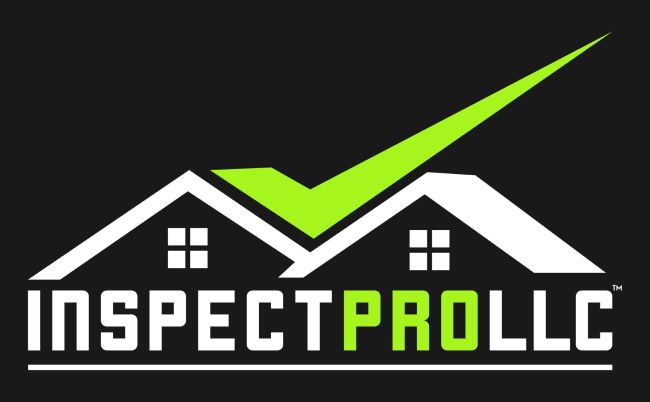
.png)

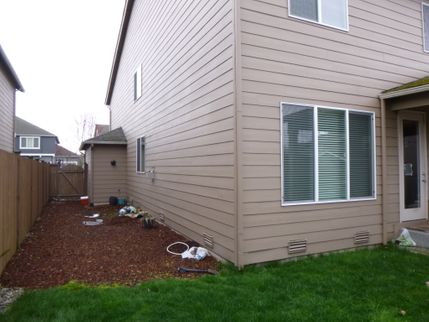
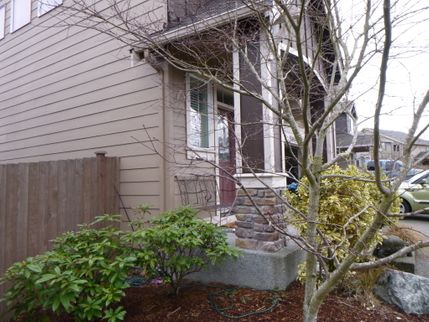
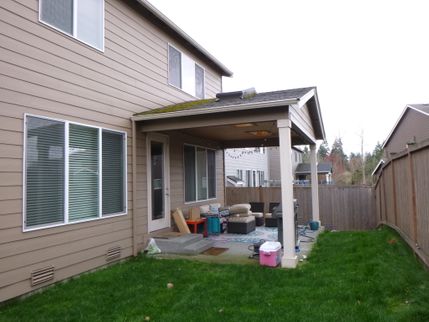
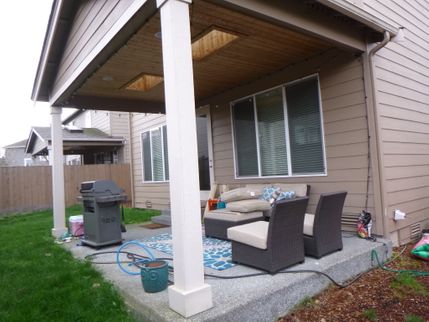
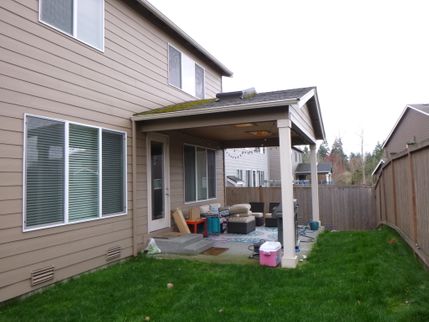

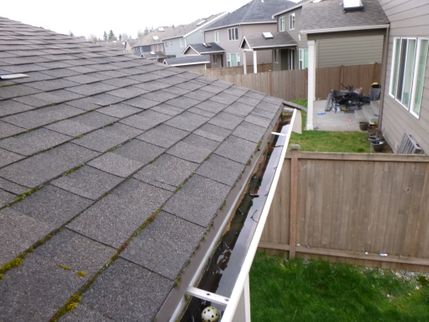

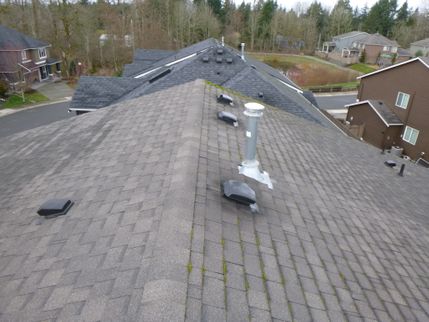
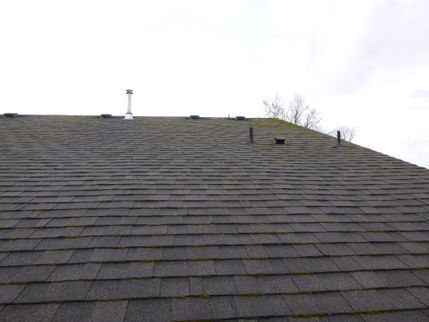



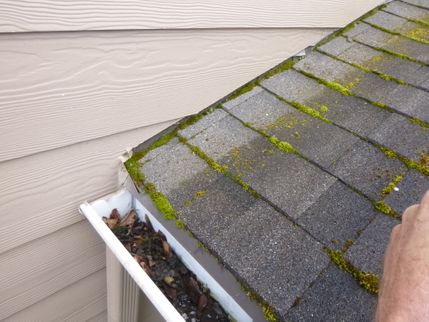


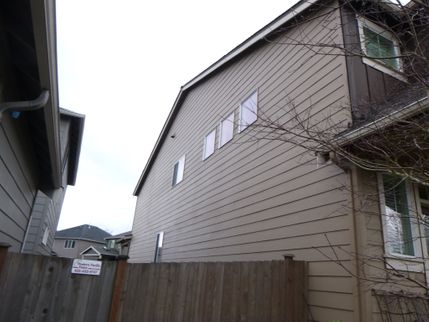
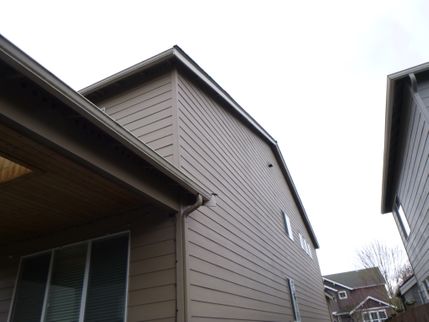
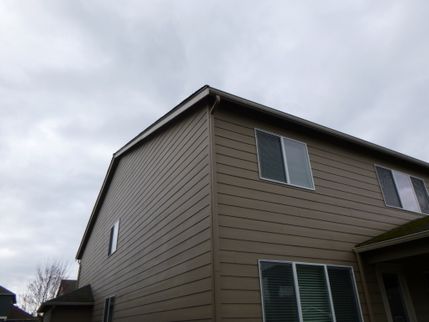
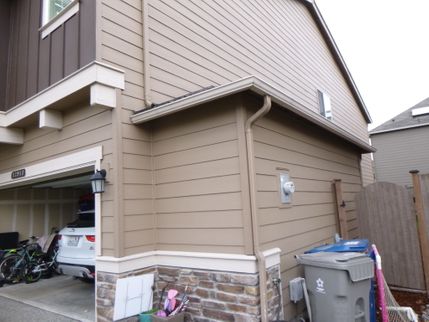
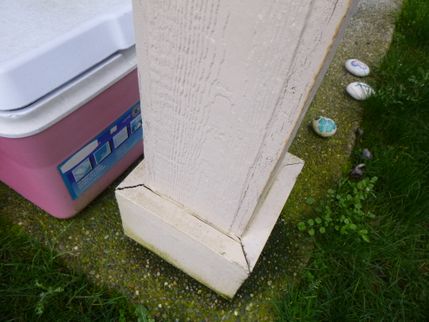

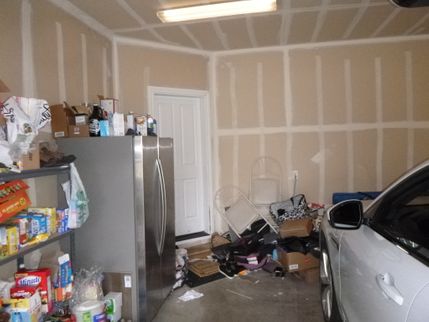
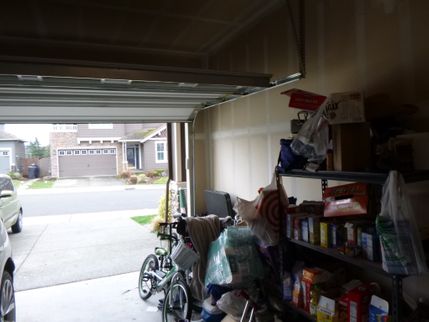
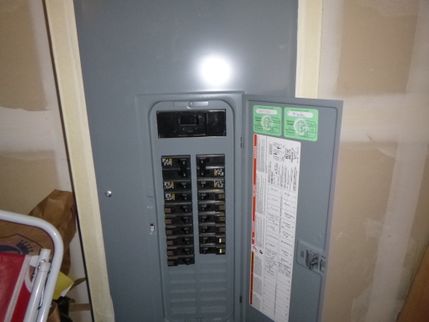
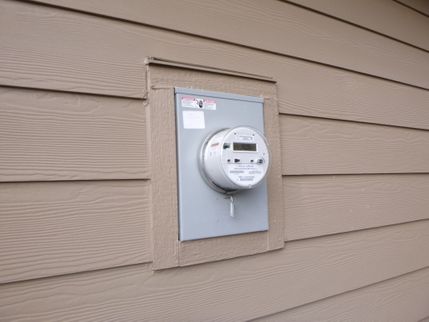

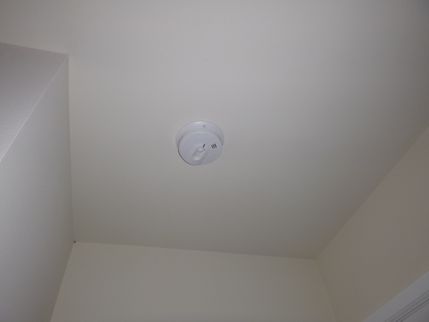

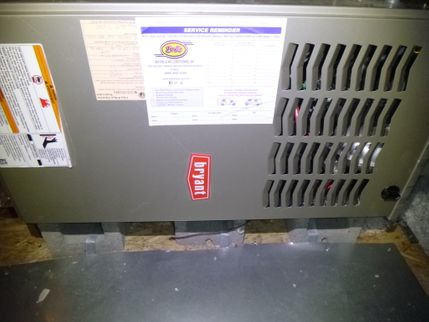
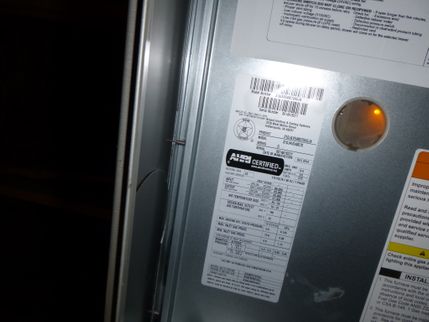
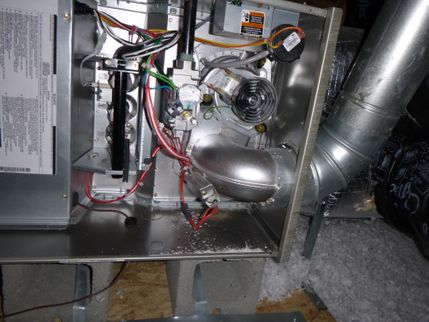
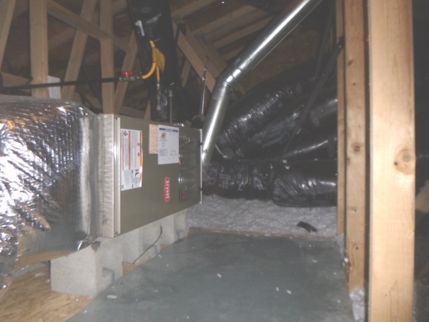

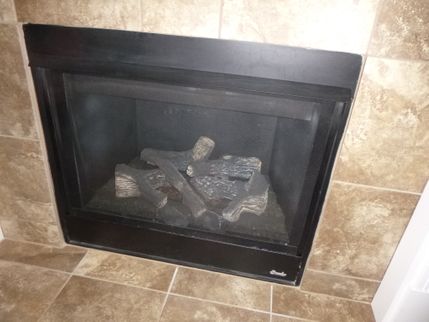
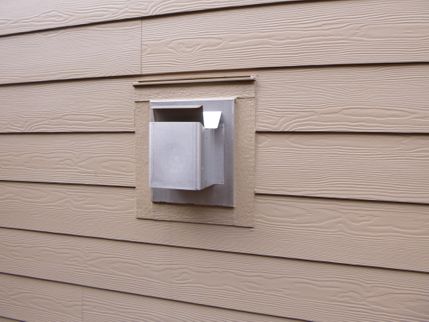
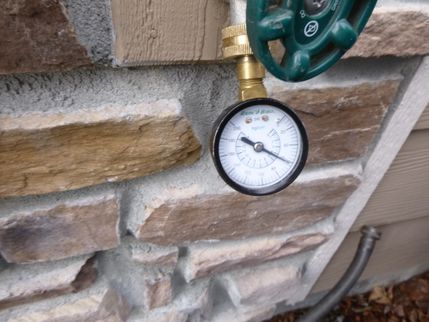
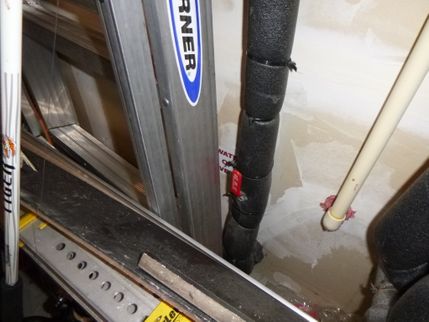

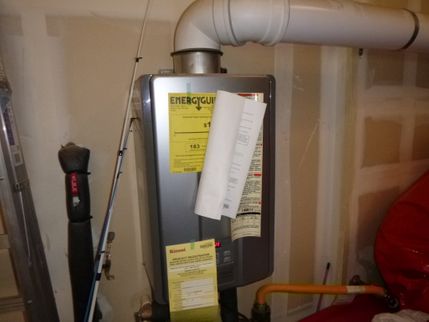
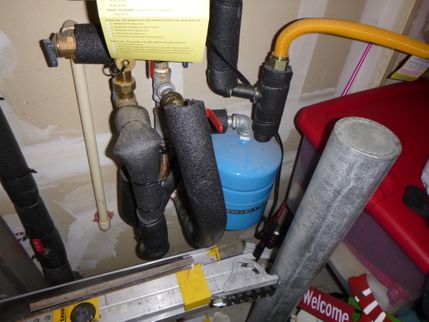
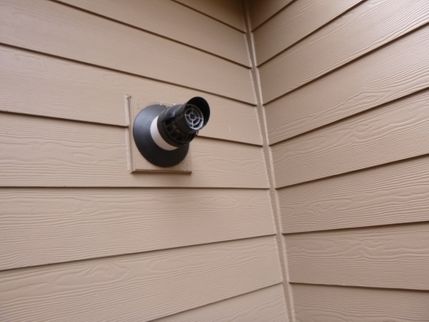
 (1) (1).jpg)
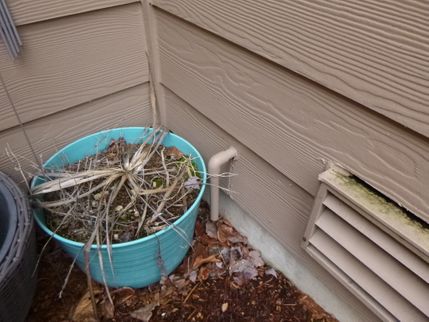
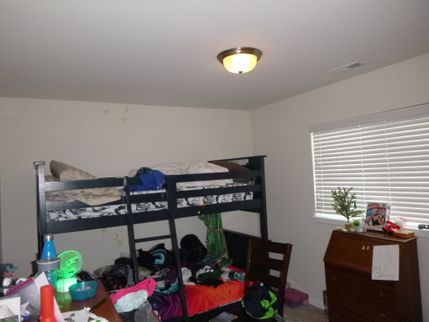


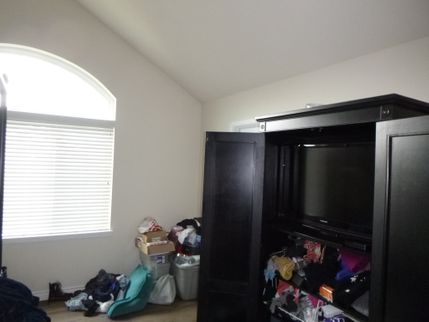

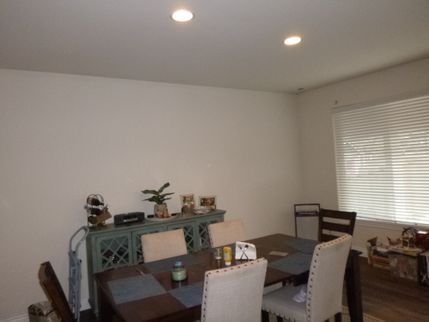
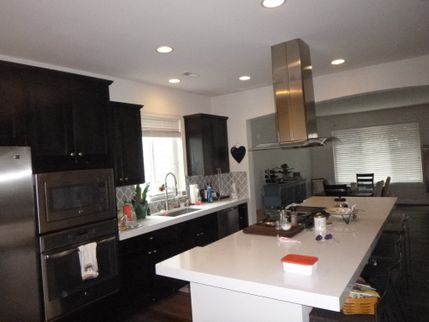

.jpg)
.jpg)


